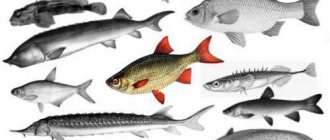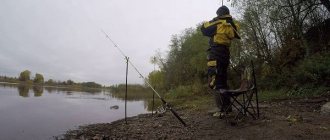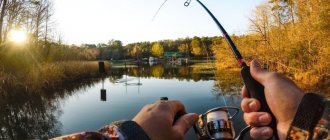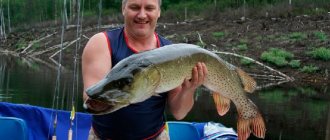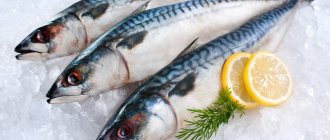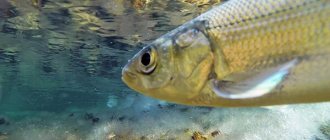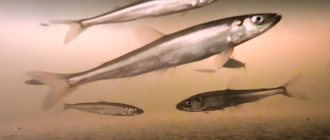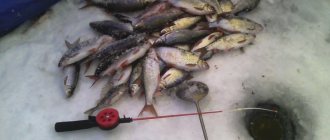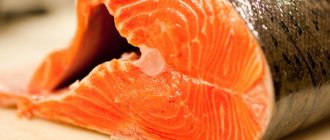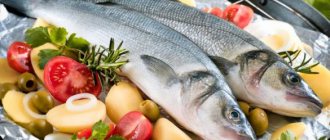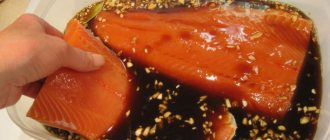White
The basis of the northern ichthyofauna are white varieties. Some of the breeds live exclusively in the fresh waters of rivers and lakes in Siberia, others love the open spaces of cold seas. Main types:
- whitefish;
- sturgeon;
- cod;
- smelt;
- salmon (partially).
The latter comes in both white and red.
One of the most valuable white northern fish is muksun. The meat of this inhabitant does not contain any mineral salts, but is saturated with bromine and copper, rare in the natural environment. The unique chemical composition allows it to benefit people with kidney disease.
In the “royal” section there is nelma. Its tender pulp is rich in fluorine and molybdenum, ideal for people on a diet.
A worthy representative is whitefish. Dishes made from its meat can improve vision and bone tissue, because whitefish accumulates vitamin A, is saturated with healthy fats and is nutritious.
From the same family of pyzhians is the Siberian whitefish. Large carcasses weighing up to five kilograms and up to 0.8 meters in length become prey for amateur fishermen, but are also caught on an industrial scale.
A more original relative of whitefish is tugun. Its second name is Sosvinskaya herring, the main distinguishing feature is the cucumber aroma, the notes of which give off tender meat with fat.
Cheer is not so widely known. This type of fish from Siberia lives almost in the ocean, only occasionally found in freshwater lakes of the far north.
If we are not talking about a stay in the North or gifts from a cold region, the list of popular fish names changes. From the northern rivers and seas, the following often end up on the tables of residents of the middle zone:
- cod;
- vendace;
- hake;
- pollock;
- whiting;
- haddock.
Taimen, burbot and sterlet are considered pearls. There is an endemic fish of Lake Baikal - omul. It is difficult to confuse it with its relatives both in taste and in photos. Previously, omul did not go beyond the boundaries of the unique lake, but today it is also found in the Yenisei. Fishermen say that the river representative has a brighter taste.

Sea fish: description
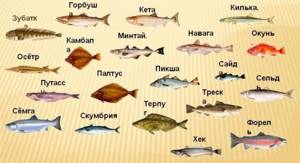
Seas, compared to fresh water bodies, differ in that they occupy large areas of water, so the nature of temperature fluctuations is completely different. This leads to the fact that marine inhabitants have special living conditions, which leaves a certain imprint on their way of life. The presence of great depths means that some species had to adapt to unique living conditions. Marine fish populations are characterized by the following features:
- The living conditions of freshwater fish species are strongly related to changes in water temperature, and for marine life the wind is considered the main influencing factor.
- Marine inhabitants are significantly larger in size compared to the inhabitants of fresh water bodies.
- Sea fish are more active, and therefore the bite is more intense.
When the wind rises at sea, it creates huge waves, therefore, under such weather conditions, the fish buries itself in the sand, hides in its shelters, or goes to the open sea, where it is deeper and the waves do not have a negative impact on the life of the fish. As a rule, fish react in advance to changes in weather conditions.
Anglers are aware of this feature and go fishing after a storm, as the fish leave their shelters and go in search of food. In such conditions, the fish begins to bite on any type of bait.
Habitats
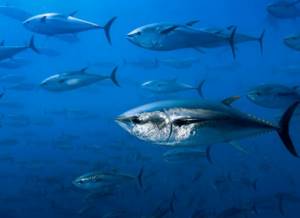
Marine fish species are found in almost all areas of the seas and oceans, regardless of natural latitudes. At the same time, the most numerous populations are observed in smaller water areas. In smaller areas there are more conditions for food, as well as for spawning.
Interesting moment! As a rule, in the upper layers of water there is an abundance of oxygen, in addition, more comfortable temperature conditions, which is undoubtedly an attractive factor for most species.
Pelagic species prefer to live in the middle and surface layers, while benthic species prefer a benthic lifestyle. Some species of fish thrive both closer to the bottom and in the upper layers of water.
Many factors of population distribution depend on the chemical composition of water horizons. If we take the inhabitants of the Black Sea, then it is almost impossible to find bottom fish here. This is due to the fact that deeper than 150 meters there is a high concentration of hydrogen sulfide. Therefore, in the Black Sea there are mainly species living down to depths of 150 meters, since there are no living conditions deeper than 150 meters.
Interesting fact! The variety of fish species also depends on the distance of the reservoir from other reservoirs. Therefore, the number of fish in the White Sea is much smaller compared to the number of fish living in the Barents Sea. This is due to the fact that the White Sea is located a considerable distance from the ocean.
The waters of the Pacific Ocean are home to a huge variety of valuable fish species, and the further you move from the coast, the greater the species diversity. Despite this, fish often visit coastal areas in search of food. After birth, fry of many species prefer to feed among thickets of aquatic vegetation, which is always more abundant in coastal waters. Fry and small species of fish also hide among the abundance of shells and piles of stones.
Important point! Often fish are washed ashore by the tide. For example, flounder is simply collected on the shore after low tide, without going out to sea to catch the fish.
Many species of fish are distributed throughout the water area, depending on the presence of different types of sea currents. Therefore, marine fish are divided into 2 groups:
- For cold-loving or arctic ones . This group of fish prefers cold sea currents, as well as significant depths where the water does not have time to warm up. As a rule, their natural habitats are sea areas of cold latitudes.
- For heat-loving or tropical . They thrive in warm waters and are also often found in shallower areas where the water warms up quickly.
When dolphins hunt schools of fish, the fish swim into the bays. In such cases, fish can be caught from the shore using ordinary fishing gear.
Distinctive features
“Cold” fish are distinguished from more heat-loving species of ichthyofauna, as can be seen in the photo, by the following features:
- Dimensions. With the exception of smelt and its relatives, the species are quite large and well-fed - both mass and fatty tissue are needed to survive in the ice.
- The scales are smaller and thinner, more like skin.
- Unlike the southern river bony species, the fish of the cold regions have only a backbone and a few large bones.
- Meat contains a large amount of fat, so it saturates the body with healthy omegas and can be cooked without adding oil.
These features make carcass cutting less problematic and more waste-free. Fish from Siberia has no pungent odor.
How does taimen reproduce?
The spawning period of redfish lasts from the end of April to June at a water temperature of +3-8°C. Sexually mature individuals aged 5-8 years participate in procreation. Since salmon typically spawn once every 2 years, only some of the adult individuals rush into the tributaries of mountain river systems. Thanks to the spring filling of the channels with melt water, the fish manage to reach the upper reaches.
As spawning grounds, taimen choose shallow reaches (0.5-2 m) with a rocky, pebble or gravel bottom. To protect the clutch from strong currents, females use their tails to knock out nesting holes, into which 5-35 thousand large dark amber eggs with a diameter of up to 5.5 mm are placed. The period of embryonic development of larvae is 30-50 days. Once the fry swims, they gather in large schools and begin to actively feed on zooplankton and benthos. Spawned spawners slide down the river to deeper places, where they remain for the entire summer season.
Video: unique filming of taimen spawning
Commercial value
If we simplify the concept of commercial fish, these will be species in the extraction of which there is an interest of the state, where the fishing industry is developing and there is regulation. Fishing enterprises extract ichthyofauna for the following purposes:
- sale for food;
- conservation and processing;
- production of medicines;
- production of lubricants and technical fats;
- fertilizer production;
- small crafts (leatherworking, jewelry and other types of handicraft production).
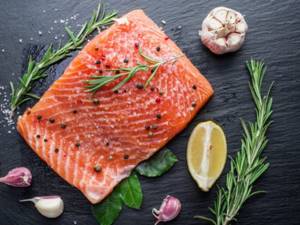
Industrial production is carried out from ships in the seas of the Arctic Ocean and large river arteries in accordance with established quotas. According to the rules, they catch fish that live at shallow depths and only outside the spawning period.
Pike
Leonid Pavlovich Sabaneev wrote about pikes weighing up to 60 kg that lived in the rivers of Siberia. In our post-war newspapers they wrote about fish weighing 30 kg that were caught in one forest lake on the Volga side. Pood fish are not a relict rarity even now. In the Volga reservoirs, predators weighing more than 20 kg are quite regularly encountered. And this is also one of the largest river and lake fish in Russia. Pike is often the most desired object of fishing in sport fishing and among amateur fishermen. (description of pike)
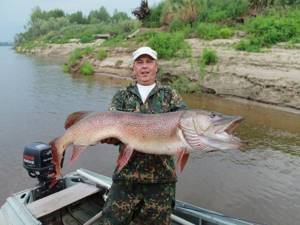
Share with your friends!
Culinary features
The most authentic type of preparation is stroganina. But in its pure form, this is rather the lot of the indigenous peoples of the north and curious tourists. For the mass public and the daily diet, corned beef of varying degrees of salting is prepared, fish is dried and smoked. For lightly salted recipes and stroganina, they try to use muksun, omul, and chir. The main reason is the absence of parasites in these fish. That is why the pulp can be eaten without heat treatment and with a minimum amount of salt without unpleasant consequences for the body.
It is customary to fry nelma - this is how the meat reveals itself most clearly, and baked and stewed on a bed of vegetables and in combination with exquisite sauces is better than whitefish and chir.
It is preferable to salt and smoke omul and tugun. The fish on this list are almost never treated with heat.
Steaks from Siberian fish are fried without adding oil - in their own fat. The heads and fins are not thrown away; they make a rich, nutritious fish soup.
Important! In the north they will never cook stroganina from fish that has been re-frozen. The raw materials must be fresh and stored in an ice glaze for a minimum amount of time. Traditionally, planing was done right next to the hole, throwing the caught carcasses onto the ice. For salting and frying over a fire, local residents put fish on sticks with pointed ends.
The nutritional value
Any fish from northern rivers, lakes and seas will be beneficial for human health. The main trouble that may lurk in it is parasites. But valuable varieties are completely devoid of them. It is better to buy the rest from trusted manufacturers, avoiding private trade.
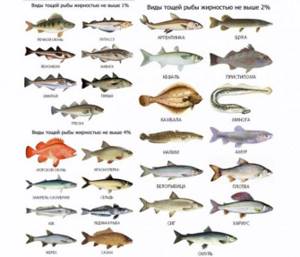
Otherwise, fish pulp is beneficial. This is facilitated by:
- polyunsaturated fats necessary for a person at any age;
- protein content exceeding that of red meat;
- a unique composition of vitamins, minerals and trace elements not found in fish from southern waters;
- hypoallergenic properties.
Regular inclusion in the diet allows you to:
- reduce the risk of developing rheumatoid arthritis by half;
- prevent heart and vascular diseases;
- nourish the brain;
- fight inflammation of internal organs;
- do not lose the beauty of your skin, hair and nails;
- keep bones and teeth strong
- extend the period of healthy life.
The main secret is a clean living environment. The ecosystem of the northern reservoirs of Russia cannot be recreated artificially; the fish of Siberia, regardless of the name, spawn only in the natural environment.
Note! No oil is used during heat treatment. There is enough fat in the tissues for self-cooking over a fire. The high protein content allows you to completely avoid beef and other red meat.
Nutrition and lifestyle
Taimen is an active shadowhunter. On sunless or rainy days, he switches to round-the-clock nutrition, and his diet:
- other fish (burbot, char, sculpin, tugun, perch, grayling);
- amphibians (frogs, newts);
- small mammals (mice, rats, squirrels, muskrats);
- waterfowl (mallards, pintails, geese, bean gooses, lesser white-fronted lesser white-fronted geese).
Many cases of attacks by large predators on dogs and foxes crossing the river have been recorded. In the warm season, the share of non-fish food in the menu can be 35-40%. Because of such gluttony and indiscriminate eating, the taimen was nicknamed the river tiger.
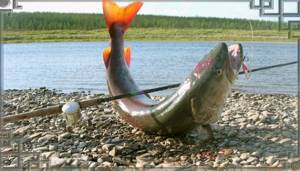
Young Talmen feed on chironomid and honeydew larvae, worms, leeches, crustaceans, and fry. At 3-4 years, a gradual abandonment of zooplankton and benthos occurs in favor of representatives of ichthyofauna. As fish grow, the potential of their jaw, swallowing and digestive systems increases dramatically. The young predator is capable of hunting prey no larger than 15-17% of its own body length. In adults, this figure is an impressive 40-42%.
Taimen is a single fish, less often a pair fish. Spends late spring and summer in cold tributaries with a constant supply of spring or melt mountain water. From mid-autumn, it goes on vacation to the main channels of large lowland rivers, which by this time have time to cool down from the summer heat.
To learn more:
Ruff: spiny perch fish
